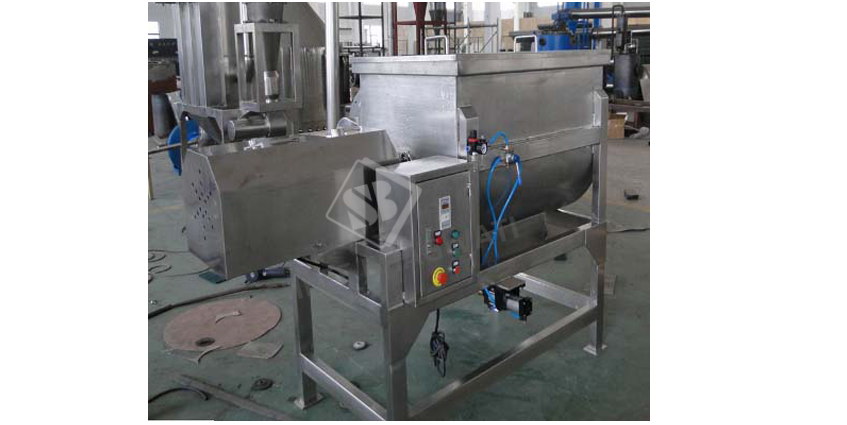All About Ribbon Blender Machine
Many of the industries like food & beverage, chemical, pharmaceutical, agricultural have solid- solid and liquid to liquid applications. These applications for fast, straightforward and reliable mixing rely on the batch ribbon blender, a machine that accomplishes of pellet bending, coating of finer particles, vacuum drying or desired paste moisture content.
A ribbon blender is made up of inner and outer helical ribbons that consist of U- shaped horizontal trough. The ribbons are pitched to move axially, radially in opposite direction. The speed of agitator tip range as typical of 300 ft/min. Selection of ribbon blender depends on the batch volume, product bulk density that determines a standard or heavy-duty model is required. Typical bulk densities the ribbon blenders can handle is around 35 lb/cu ft.

The selection of the material of construction depends on the compatibility of raw materials. There are some features that include surface finish, tight covers, safety gratings, size and type of discharge valve, high-speed choppers, heating/cooling jacket etc. need to be discussed with your supplier for the ribbon blender.
The drive system of the ribbon blender includes flexible belts and a set of pulleys to help produce the desired speed and torque ranges. It also consists of a belt drive for power transmission between motor and gear reducer.
Gearmotor is a one-piece motor reducer that matches the characteristics of the gear unit resulting in a high dynamic capability for ribbon blending operations. It also works well with electronic inverters that provide enhanced speed control, overload protection, and adjustable starting torques. The ribbon blender system requires tension adjustment after installation as the belt wears and stretches when it is new. It also limits the longevity of motor/ reducer bearings. Through belt slippage the belt – driven ribbon blender system to suffer from losses in efficiency and horsepower.Comparatively, gearmotors delivers better performance, higher operating efficiency and other advantages. The service life is longer due to the overhung loads on the motor and elimination of reducer-shaft bearings in gearmotors as well as adjusting belts and coupling.
Most of the manufacturers rely on belt-driven systems as shot filled coupling was prone to overheating and hydraulic coupling followed with a fail-safe fuse. Today, as compared to the past blender designs Gearmotor uses latest electronic drive technology opening with all industrial possibilities. During the process of blending and discharging, the variable frequency drives (VFD) allows a soft start providing a convenient way of controlling the speed. Gearmotor and Variable Frequency Drives (VFD) are the most reliable and cost-effective option for ribbon blender or ribbon mixer applications. In order to program various steps and recipes, sophisticated PLC systems can be easily integrated.
















